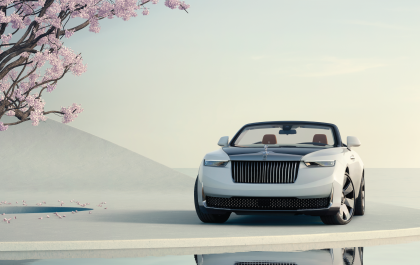By Niraj Kakade
The fifth-generation Range Rover is finally here, and everything about it commands your attention
We Indians love everything XXL sized. Be it our weddings, our potbellies, or even the vehicles we drive. How else would you explain the avalanche of SUVs that have been flooding our market for nearly a decade now?
Perhaps, this is what the bosses at Tata-owned JLR were thinking when they announced the details of the 2022 Land Rover Range Rover back in January. The vehicle is finally here. Priced at Rs 2.38 crore, Land Rover flagship is obviously targeted at the top end of the luxury SUV market, and it doesn’t disappoint.
The first thing you notice about it is the sheer size. It is so big that I started wondering about the logistics involved in trying to fit the behemoth in the tiny showroom we visited. While the length of the vehicle at around five meters remains the same as the previous version, the wheelbase has been stretched to 2.997 m, and if you opt for an extended-wheelbase model, this size increases by a further 2 cm. The extra dimension seems to have gone into making the cabin bigger. And perhaps why the vehicle now features an additional row at the back, a 7-seater option in the longer shell body.
Despite its extra-long dimensions, though, the new Range Rover is not intimidating, thanks to designer Gerry McGovern’s minimalistic approach. The SUV looks sculpted from a single piece of metal, with no cuts or creases on the body. The pillars have been blacked out and the size of the front grille is reduced. Even the rectangular LED headlamps in front look slimmer. The sides, too, sport a clean but imposing look, thanks to the gently sloping roof and the massive 22-inch tyres (with the option of upgrading to 23-inch).
But nowhere is its minimalistic design approach evident than at the rear, where the LED taillights disguise themselves as two black pillars separating the split tailgate. This is even more evident in the grey variant. Overall, the design is well-rounded, both literally and metaphorically. But in no way does it take away the feeling of ruggedness you’d expect out of a Range Rover.
Despite my 5’11 frame, getting in and out of the SUV felt like climbing two stairs at once (unless you opt for the side step accessory). But once you’re in, you would be reluctant to leave. The classy leather-wrapped cabin interiors and the elegant seats make you wish you were dressed in a tuxedo, even if you are just taking a short spin around the block. The rear executive seats come with 24-way power adjustment, including one where it reclines to a flat position while the unoccupied front passenger seat neatly folds on itself, and the footrest gets elevated simultaneously. The only thing it doesn’t do is to tuck you in with a blanket. And as if that is not enough, there’s also a multi-level massage functionality along with options for ventilation and heating.
You can opt for a pair of 11.4-inch touchscreen units designed especially for the rear seats, which displays everything from navigation to Netflix, controlled via the central touchscreen unit placed on the armrest. It also allows you to control all aspects of the cabin, from the four-zone air-conditioner to the 1,600W Meridian Signature sound system with its 35 speakers (in the top-spec SV model), the mechanical cupholder, ambient lighting, and more. But what caught my attention was a button called ‘Tailgate Event Suite’, which I discovered is the Range Rover’s party trick, literally. It makes the speakers in the second row and the tailgate play in tandem for a musical concert experience. When not in use, or to make room for a third passenger, the central control panel can also be folded back with the touch of a button. The view from behind the wheel of the new Range Rover has the feel of enjoying the panorama from the comfort of your balcony. The elevated seats provide optimum visibility of the road ahead. But considering the sheer size of the vehicle, blind spots are inevitable. You can avoid it by using the 360-degree camera view displayed on the dashboard’s 13.1-inch infotainment system. The dashboard is as classy as it is functional, with crisp touchscreen feedback via the friendly Pivi Pro user interface. The multiple haptic motors give the user the ‘feel’ of turning a knob or pressing a button.
Built on the JLR’s new MLA-Flex architecture, the flagship variant is offered with three different powertrain options — a 48-volt mild-hybrid system, working together with either a 3.0-litre six-cylinder turbocharged petrol (349PS/550Nm) or diesel (346PS/700Nm) engine. Or a 4.4-litre twin-turbocharged V8 mill, which makes 523PS of power and 750Nm of torque. All engine options of the new Range Rover get an 8-speed all-wheel drive torque convertor automatic transmission as standard. And yes, before you start sweating, rear-wheel steering is standard across all variants.
Reproduced with permission from Mansworldindia.com













